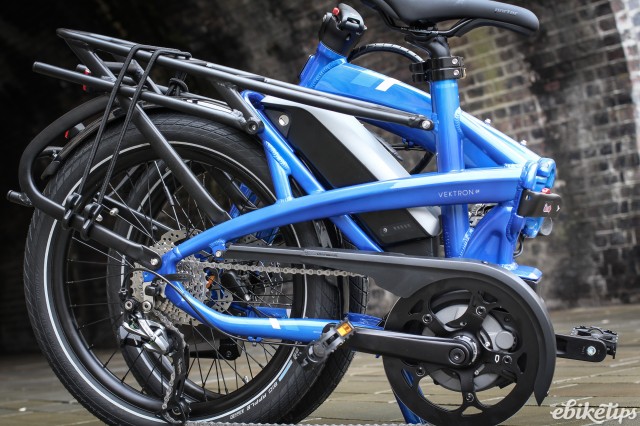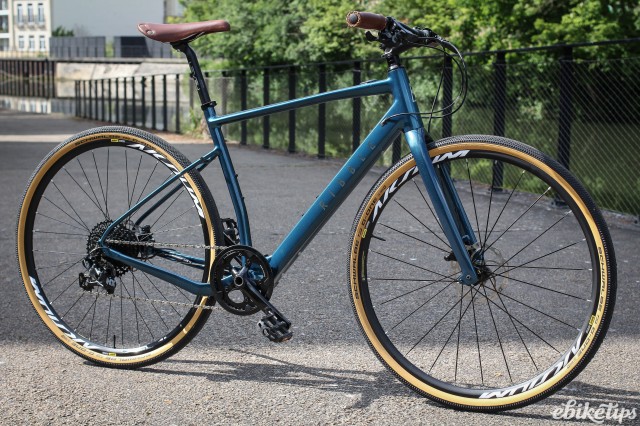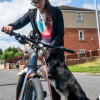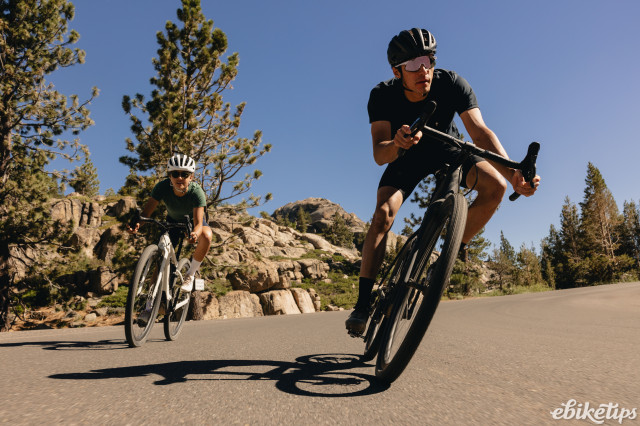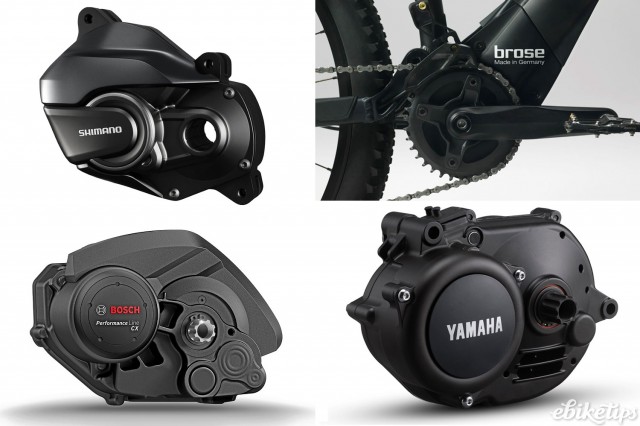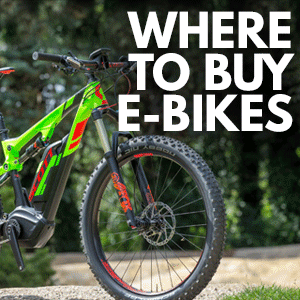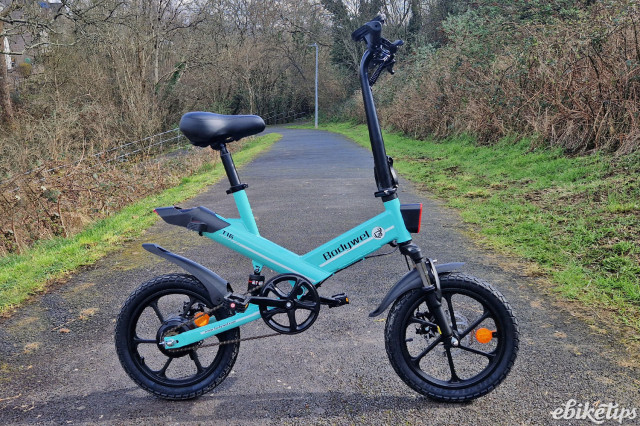Electric bikes are quite possibly the most fun way of getting to and from work. The benefits of cycling are obvious, only with an e-bike you also won't sweaty. If you don't do the full commute on your e-bike, then you can still enjoy the benefits in a smaller, more compact package with an e-folder.
From folders to gravel or hybrid bikes, there’s a lot of variety on the market these days, and not all have to break the bank. If you’re eligible, you could save money by using a cycle to work scheme through your employer to make the switch to an electric bike even more attractive.
Best electric commuter bikes 2024
- Best overall/Best folder: Tern Vektron Q9 | Buy now for £3,000 from Surge Bikes
- Best hybrid: Ribble Hybrid AL e | Buy now for £1,999 from Ribble Cycles
- Best step-through: Specialized Turbo Como 3.0 | Buy now for £1,999 from Specialized
- Best on a budget: Carrera Subway E | Buy now for £1,149 from Halfords
- Best of the rest
How we chose
Best overall/best folder: Tern Vektron Q9 – £3,500
If you want the practicality of an electric folding bike but want something a bit more substantial and with extra carrying capacity, then the Tern Vektron may be a worthy investment. At £3,500 it’s not cheap, but for that money you get a Bosch Active Line Plus mid-drive motor, a 400Wh battery, and an extended rear rack with a 27kg carrying capacity.
It’s compatible with child seats, so you can even drop your child off at school on the way to work. The Vektron Q9 also comes with hydraulic disc brakes and a frame that can be adapted to suit most rider heights.
For more detail, read our review of the Tern Vektron Q9.
Best hybrid - Ribble Hybrid AL e – £2,599
A masterclass of suave styling paired with a discreet motor, the Ribble Hybrid AL e takes the brand's popular Hybrid frame and integrates a MAHLE Smartbike System X35+ electronic system. This rear hub motor system provides smooth assistance, ideal for most terrain (hilly or flat) and with hybrid tyres you can even take the towpath to work.
The Fully Loaded edition includes a paint-matched rear rack, ideal for carrying pannier bags so you don’t need to lug a rucksack on your back, and full length mudguards for splash protection year round. And if you act fast, you can get all this for under £2k as Ribble has a sale on.
For more detail, read our review of the Ribble Hybrid AL e.
Best step-through: Specialized Turbo Como 3.0 – £2,500
The Specialized Turbo Como 3.0 is the brand’s lowest step model, aimed at getting a wider range of people on e-bikes on their commutes. It's dropped significantly in price since we reviewed it - by £1,000 to be exact. And, it's currently on sale for under £2k so an even bigger bargain.
The version we rode was the reimagined model for 2022, and we were very impressed with the overall package – especially as the Como 3.0 is the entry-level option in the range. Tester Richard found it coped well even in hilly Calderdale: “Given the bike is the lower powered spec of a city-specific model, I was really impressed with the way it coped with the testing conditions that are not its natural habitat.”
Specialized’s own motor really comes to life on the Turbo Como, making it a premium but high-quality option.
For more detail, read our review of the Specialized Turbo Como 3.0.
Best on a budget: Carrera Subway E – £1,1,49
When we reviewed this bike initially in 2019 it was below £1,000 (and sometimes still is if you catch it on sale), but even with a modest price increase it’s still one of the best value e-commuters out there. The Subway E comes with Suntour’s HESC rear hub motor and a 374Wh battery.
Our reviewer reckoned you can easily exceed Carrera’s 40km suggested range, after easily riding three loops of their 9km commuter (with 160m of climbing) on the highest assist mode. There are compromises, but for the price, it’s hard to beat as a starter commuter.
For more detail, read our review of the Carrera Subway E.
Best of the rest
MiRider One GB3 – £2,495
Upgraded and revitalised, the MiRider One GB3 takes the best bits from the previous One iterations, like the frame design and durability, and pushes it to new levels. The GB3, named after the three-speed gearbox, now provides users with gears, hydraulic disc brakes, a brand new display and a gel saddle.
It’s a little bit heavy to be lugging around on trains and buses, but if you want something that’s got a bit of oomph to get you to and from work with ease, but you don't have a lot of space for storage, this could be a winner.
For more detail, read our review of the MiRider One GB3.
Specialized Turbo Vado SL 4.0 EQ – £2,600
A fully equipped commuter bike that looks rather sporty? Sign us up. The Specialized Turbo Vado SL 4.0 EQ is just that – a damn good looking commuting e-bike. Complete with lights, full mudguards and a rear rack, it’s pretty much set up for commuting glory.
The Specialized SL 1.1 motor means it gives ‘2x you’ power and provides up to 35Nm of torque. It doesn’t sound like a lot but our tester found it doesn’t limit its hill climbing ability at all. It's also dropped by £1,000 in price since our review, so now's the time to invest if you're after a suave commuter.
For more detail, read our review of the Specialized Turbo Vado SL 4.0 EQ.
Moustache Lundi 27.5
By no means the cheapest, but certainly one that stands out from the crowd - the Moustache Lundi 27.5 is superbly comfortable and packs a punch at the same time. It features a Bosch Performance Line motor, and a 500Wh battery - although you can spec it with a 625Wh option if you'd prefer.
It has the unique moustache bars you'd expect from this brand, and they provide an upright riding position - ideal for urban riding. It also uses Enviolo hub gears, so less maintenance is required than a traditional derailleur option. And if you'd prefer a belt drive, Moustache has just launched the Lundi 27.6 which is slightly more money but comes with a CDX belt.
For more detail, read our review of the Moustache Lundi 27.5.
Cytronex C1 System – from £1,045
Of course, if you already have a prized commuter bike that you think would just benefit from a little extra juice, the Cytronex C1 System is one of, if not the best e-bike conversion kit you can buy. This external system is designed with two battery packs inside, and offers 198Wh paired with a front hub motor.
The battery takes residence in place of one of your bottles, and there’s a handlebar mounted boost button which is where you control the five power settings. A sprocket movement sensor is also mounted on the chainstay, offering a discreet solution. It’s between 3.2-3.6kg so pretty lightweight for a retrofit option, and high quality, too.
For more detail, read our review of the Cytronex C1 system.
How we review e-bikes
A lot of work goes into testing e-bikes thoroughly. Our reviewers ride each bike for at least a month before writing up their findings and coming up with final verdicts.
Every bike we review is assessed thoroughly based on its suitability for the intended discipline and riding style. A lot of focus is of course on the motor and battery, but we pay attention to all the component choices from wheels and tyres to the drivetrain and finishing kit.
We also compare the bike to its main rivals - if there is a similar bike with better spec and a lower price, we'll take this into account.
Why you can trust us
E-bikes recommended in ebiketips' buyer's guides will almost always be those we've reviewed in full, or which are rated highly by multiple members of the team.
We've reviewed literally hundreds of e-bikes over the years, and the commuter bikes you'll find in this guide will all have scored 8/10 or more to have been considered for inclusion. Whatever the brand, whatever the marketing claims, if the bike hasn't performed, it isn't listed here.
All of our reviewers and buyer's guide writers are experienced e-bikers. You can therefore be sure we've carefully considered our selections, while the advice you'll find below is based on our real-world experience.
If you're new to e-bikes, you might want to take a look at our beginner's guide to buying an e-bike. Our overall guide to the best electric bikes may also be of interest if you're not yet quite sure what type of electric bike you're after.
FAQs about electric commuter bikes
How much faster is it to commute by an electric bike than a non-electric one?
This depends on a number of factors. We need to take into account your route (terrain and how hilly it is), fitness, the weather, and the bikes we’re comparing. For example, if you ride a five mile flat journey to work, a rider of average fitness could well be above the 15.5mph assistance limit for most of the time. In this situation, the places where an e-bike will make up time will be setting off from junctions or traffic lights.
And this is where the benefits of electric bikes as commuters comes in. Depending on your route and fitness, you may well get to your place of work faster, and certainly with a bit less effort. In the summer, when it’s warm, you won’t sweat as much. And if your route is hilly, an e-bike will help to flatten some of those hills and will provide far more benefit in terms of speed than on a flatter route.
Can you commute with an electric bike?
Yes, you can. Electric bikes, assuming they are EAPCs, are classed as pedal bicycles. This means you can ride in all the same places as an unassisted bike and you do not need any licensing or insurance to ride one.
If you want to commute by bike, an electric bike is a great option as it gives you the freedom to choose a route based not just on avoiding that one ‘big hill’. Instead, you can ride up many big hills and still arrive at work feeling fresh and ready for your day.
Do I need a specific electric bike to commute on?
In short, no. Depending on your route, you can use any type of electric bike no matter what its ‘label’. There’s nothing stopping you using a £12,000 electric road bike if that will help your morale and get you out the door on a cold, dark winter’s morning! As long as the bike you choose is fit for purpose, there are no rules about what bike you should be using. If you want to look at a broader range of electric bikes, read our overall guide to the best electric bikes.
